
-

Research & Policy
Housing Stability and Tenant Protection Act: An Initial Analysis of Short-Term Trends
The NYU Furman Center analyzed several housing indicators to gain deeper insight into the initial impacts of the Housing Stability and Tenant Protection Act (HSTPA). We examined measures that have been commonly discussed in the public debate on HSTPA, including a comparison of multifamily sale prices, alteration job filings, housing quality complaints, code violations, and eviction filings before and after the passage of HSTPA.
-

Research & Policy
Do Lawyers Matter? Early Evidence on Eviction Patterns After the Rollout of Universal Access to Counsel in New York City
In a special issue of Housing Policy Debate on evictions, Ingrid Gould Ellen, Katherine O’Regan, Sophie House, and Ryan Brenner analyze early findings from the NYC Universal Access to Counsel program (UAC). Considering the multitude of difficulties associated with appearing in court without a lawyer, providing low-income tenants with access to free legal services is thought to decrease the likelihood of eviction and possible homelessness.
-

Research & Policy
Challenges and Opportunities for Hotel-to-Housing Conversions in NYC
In a new white paper, the NYU Furman Center’s Noah Kazis details essential background information on the matter of hotel-to-housing conversions. He highlights the regulatory constraints on conversions, what types of properties would be more feasible to convert, and how new state interventions could impact the effort.
-
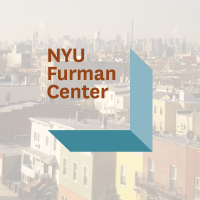
Research & Policy
Rent Regulation for the 21st Century
A primary goal of rent regulation is to protect low-income renters from unexpected spikes in their monthly housing costs. As a solution to housing instability, however, rent regulation has several potential drawbacks: it can reduce the overall supply or quality of rental housing; it can create a two-tiered system that leaves tenants in unregulated housing unprotected; and it often benefits higher-income, rather than lower-income households. The policy brief instead recommends pairing broad-based anti-gouging rent regulation paired with targeted subsidies as the best way to stabilize low-income renters while avoiding the drawbacks of strict, broad rent regulation and means testing.
-

Research & Policy
Bolstering the Housing Safety Net: The Promise of Automatic Stabilizers
In a new paper published by the Brookings Institution’s Hamilton Project, Robert Collinson, Ingrid Gould Ellen, and Benjamin J. Keys propose three stabilizers that build on the lessons of the Great Recession and COVID-19 pandemic to backstop housing before the next crisis hits.
-

Research & Policy
Advancing Racial Equity in Emergency Rental Assistance Programs
To explore inequities in housing insecurity and inaccessibility of housing assistance faced disproportionately by Black, Latino, and Native American renters—issues that existed prior to and have been exacerbated by the COVID-19 pandemic—the NYU Furman Center, The Housing Initiative at Penn, and the National Low Income Housing Coalition collaborated on a research brief: “Advancing Racial Equity in Emergency Rental Assistance Programs.”
-
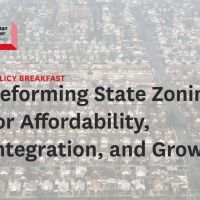
News & Events
Policy Breakfast: Reforming State Zoning for Affordability, Integration, and Growth
The NYU Furman Center hosted a two-part virtual policy breakfast series reviewing efforts across the country to tackle exclusionary zoning, and discussing the lessons these initiatives hold for New York.
-
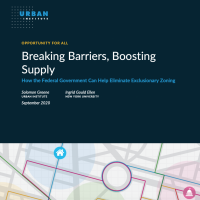
Research & Policy
Breaking Barriers, Boosting Supply
The Urban Institute’s Opportunity for All project aims to promote federal strategies that support strong and inclusive neighborhoods. In one of the project’s briefs, “Breaking Barriers, Boosting Supply,” Furman Center Faculty Director Ingrid Gould Ellen and the Urban Institute’s Solomon Greene advocate for the federal government to tie state funding opportunities to local affordable housing goals. They highlight the potential for national policy reform to incentivize communities to take action in improving land use and zoning regulations, ultimately allowing for more affordable housing and healthier, more diverse neighborhoods.
-
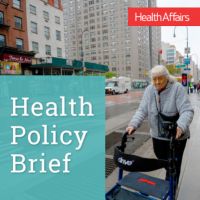
Research & Policy
Gentrification and the Health of Legacy Residents
Given the well-researched connection between neighborhoods and health outcomes, it seems a reasonable assumption that gentrification has an impact on residents’ health. This is the topic of “Gentrification and the Health of Legacy Residents,” written by NYU Furman Center Faculty Director Ingrid Gould Ellen and Graduate Researcher Alexis Captanian, published in Health Affairs. In the article, Ellen and Captanian review existing literature on the effects of gentrification to explore how it might influence individual health outcomes for low-income households who stay in place even as the neighborhoods around them change.
-
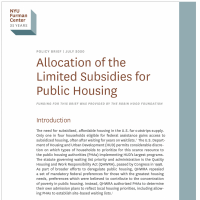
Research & Policy
Allocation of the Limited Subsidies for Public Housing
Public Housing Agencies (PHAs) face higher demand for their units than their available stock. This means that waiting lists are long and policies to prioritize access to certain groups become a crucial tool to allocate housing in a way that benefits the ones who most need it. This post describes the findings of the brief “Allocation of the Limited Subsidies for Public Housing”, that analyzes the effect of local priority systems in the type of households that benefit from this housing option.


